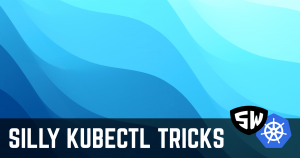Blog
You can become a superhero of automation and development by learning and practicing. This is our blog from our learnings and practice.
We are consultants and trainers in Cloud Foundry, devops automation and continous delivery. We have the best jobs in the world helping you have the best job in the world.

Photo by Hans Eiskonen on Unsplash Ever needed to diagnose weird networking bugs on BOSH deployed VMs? We ran into a problem with a BOSH release that would create routes for itself on the networking stack. To detect this, Arpy was created. How it Works Arpy is a simple bash script which uses the BOSH

Now that we have everything deployed, let’s explore and understand Argo and what it can do for you. Understanding Applications: An Argo Application is a Kubernetes Custom Resource Definition. It is used by Argo to provide a wrapper around a few other tools it is able to use. We’ll start with the common settings for

Welcome to part two of our QUAKE-Speedrun. This time we will deploy Argo and use it to automate deployments of our additional components on our Kubernetes Cluster to start building out our Platform. First, let’s take a look at the Argo Project Modules to understand what their Job is. Argo Project: ArgoCD “Declarative Continuous Delivery

Ahoy, There! This is just one blog post in an ongoing series about fun things you can do with the Kubernetes CLI, kubectl. We have a whole bunch of these over on our Silly Kubectl Tricks page. Also don’t forget to checkout out the video series on YouTube! UNIX/Linux system administrators the world over regularly

Traditionally, Linux separates users and their processes into two different groups: root (user ID 0) and everyone else. Back in 1999, with the 2.2 Linux kernel release, kernel developers started breaking up the privileges of the root user into distinct capabilities, allowing processes to inherit subsets of root’s privilege, without giving away too much. Fast-forward

Last time, we successfully finished deploying the first part of our platform. We have bootstrapped an AWS Env via Terraform and deployed a Kubernetes Cluster via Kops. Now that we have the infrastructure in place, let’s go through what we did. After we’ve provided our credentials for AWS and installed the CLI’s, the command we

Introdution: A follow along tutorial to build your own Platform. This was inspired by the gaming speedrun community. A speedrun is a play-through, or a recording thereof, of a whole video game or a selected part of it (such as a single level), performed with the intention of completing it as fast as possible. While

Today we kick off our Spring 2020 internship and are excited to begin talking about the projects that our team will possibly be working on! The goal of all of these project is to be self contained, scoped to the length of the semester, and fit into a larger open-source project. Tweed GUI Tweed is

One of the brilliant aspects of BOSH that has been brought across to Kubernetes by the Quarks & KubeCF teams has been the generation of internal secrets. Internal client needs a secret to talk to internal Redis? No one cares what it is; just generate a good one and share it with the two entities.